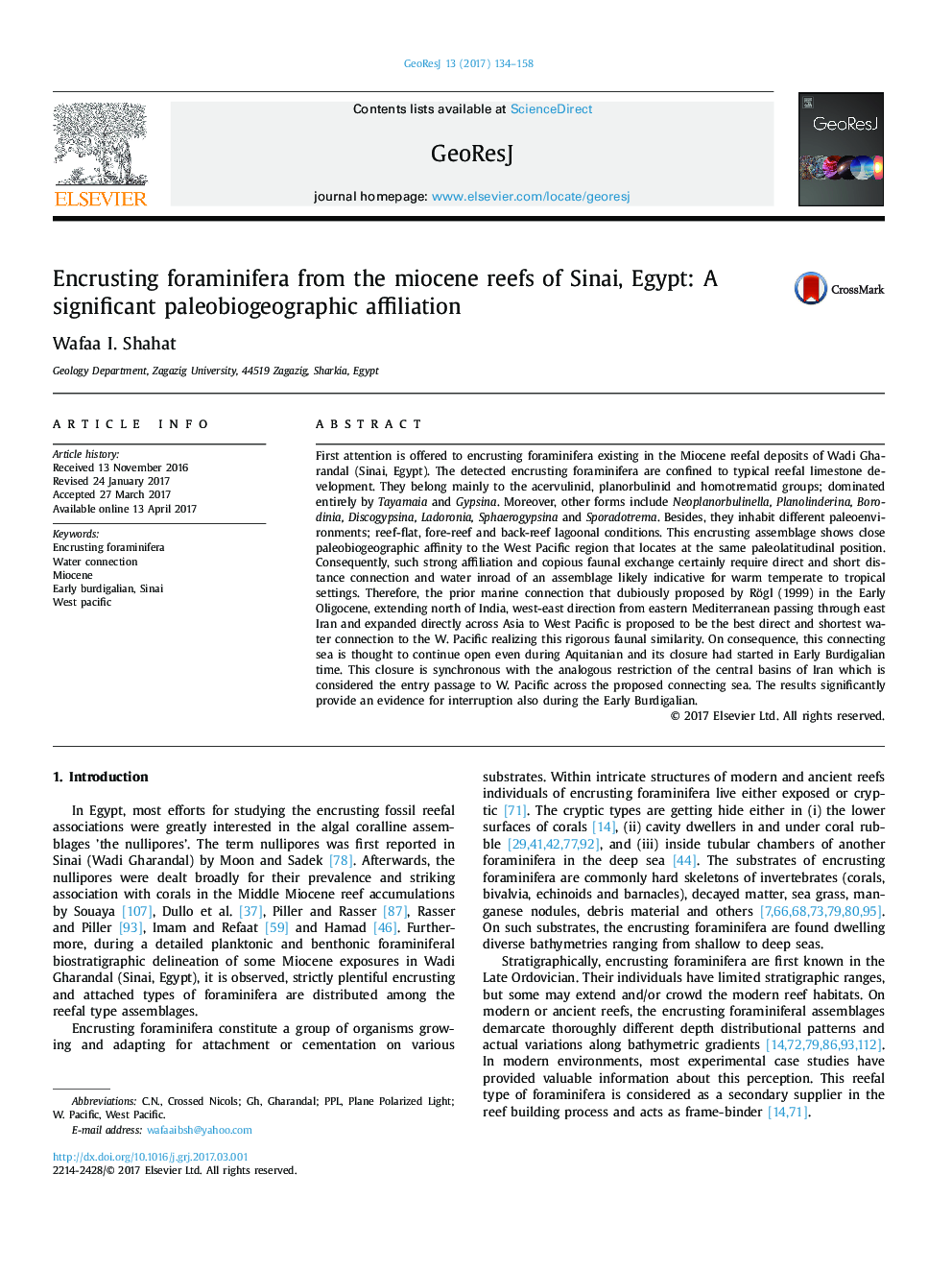| کد مقاله | کد نشریه | سال انتشار | مقاله انگلیسی | نسخه تمام متن |
|---|---|---|---|---|
| 5779212 | 1634292 | 2017 | 25 صفحه PDF | دانلود رایگان |
عنوان انگلیسی مقاله ISI
Encrusting foraminifera from the miocene reefs of Sinai, Egypt: A significant paleobiogeographic affiliation
ترجمه فارسی عنوان
فورامیوای فایبرگ برگرفته از صخره های میوسن سینا، مصر: وابستگی قابل توجه به پیلو بیوگرافی
دانلود مقاله + سفارش ترجمه
دانلود مقاله ISI انگلیسی
رایگان برای ایرانیان
موضوعات مرتبط
مهندسی و علوم پایه
علوم زمین و سیارات
علم هواشناسی
چکیده انگلیسی
First attention is offered to encrusting foraminifera existing in the Miocene reefal deposits of Wadi Gharandal (Sinai, Egypt). The detected encrusting foraminifera are confined to typical reefal limestone development. They belong mainly to the acervulinid, planorbulinid and homotrematid groups; dominated entirely by Tayamaia and Gypsina. Moreover, other forms include Neoplanorbulinella, Planolinderina, Borodinia, Discogypsina, Ladoronia, Sphaerogypsina and Sporadotrema. Besides, they inhabit different paleoenvironments; reef-flat, fore-reef and back-reef lagoonal conditions. This encrusting assemblage shows close paleobiogeographic affinity to the West Pacific region that locates at the same paleolatitudinal position. Consequently, such strong affiliation and copious faunal exchange certainly require direct and short distance connection and water inroad of an assemblage likely indicative for warm temperate to tropical settings. Therefore, the prior marine connection that dubiously proposed by Rögl (1999) in the Early Oligocene, extending north of India, west-east direction from eastern Mediterranean passing through east Iran and expanded directly across Asia to West Pacific is proposed to be the best direct and shortest water connection to the W. Pacific realizing this rigorous faunal similarity. On consequence, this connecting sea is thought to continue open even during Aquitanian and its closure had started in Early Burdigalian time. This closure is synchronous with the analogous restriction of the central basins of Iran which is considered the entry passage to W. Pacific across the proposed connecting sea. The results significantly provide an evidence for interruption also during the Early Burdigalian.
ناشر
Database: Elsevier - ScienceDirect (ساینس دایرکت)
Journal: GeoResJ - Volume 13, June 2017, Pages 134-158
Journal: GeoResJ - Volume 13, June 2017, Pages 134-158
نویسندگان
Wafaa I. Shahat,
